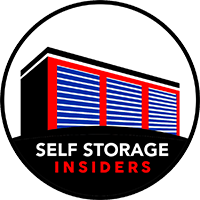The realm of photography has evolved drastically with technological advancements in camera mechanisms and the development of novel equipment. Renting out pictures equipment has emerged among the most-liked ideas for enthusiasts, professionals, and amateurs. However, dealing with such renting effectively demands that managers to certain proper practices and best practices adhere.
Firstly, one of the most important advances relates to equipment inspections. To renting Prior, each little bit of items should undertake extensive bank checks for any mechanical or operational issues. This ensures not just that customers be given functional equipment but minimizes the potential for disagreements over equipment harm also. Today, you can use digital checklists or specialized inspection apps to manage this technique more seamlessly. This digitization is a substantial progression from former manual tracking methods.
Secondly, transparency in rental policies has been highlighted as an essential facet when renting out photography equipment. A thorough local rental agreement, including information regarding the rental period, responsibility for damages, and payment terms, should be presented to all renters clearly. Recently, businesses have started providing online versions of the agreements, alongside their physical formats, fostering efficiency and accessibility.
 A 3rd advancement is in the integration of online booking platforms. These systems are now widely formatted for desktops and mobile devices, offering a streamlined, user-friendly experience for Hub Split customers. The digitalization of booking equipment encourages renters to choose and secure what they need on the go, overcomes geographical limitations, and provides a digital record of all transactions.
A 3rd advancement is in the integration of online booking platforms. These systems are now widely formatted for desktops and mobile devices, offering a streamlined, user-friendly experience for Hub Split customers. The digitalization of booking equipment encourages renters to choose and secure what they need on the go, overcomes geographical limitations, and provides a digital record of all transactions.
The fourth update can be seen in insurance practices, where renters tend to be necessary to produce evidence of insurance policy addressing rented picture taking equipment. That is done to mitigate risks associated with damage or theft. Within innovative practices, some businesses offer in-house insurance options or collaborations with third-party insurers to facilitate the procedure, so that it is smoother and much more comfortable for the rentees.
Fifthly, the adoption of advanced inventory management systems is another breakthrough in this field. These systems help in effectively cataloging the equipment, tracking its location, and flagging rental deadlines. They save companies from the challenges of obsolete approach to dealing with and tracking rented items.
The last substantial advancement relates to the maintenance of equipment hygiene, which includes become increasingly important amid present-day health issues. Adopting rigorous cleaning protocols for all rented equipment – items used near to the face especially, such as eyepieces and cameras – is becoming a business standard. To complement this, businesses have begun offering personal protective equipment and sterilization kits to customers, presenting an added layer of protection and Hub Split care.
Overall, these practices reflect the dramatic advancement of rental processes for photography equipment, increased by know-how and a much more customer-focused approach. From conducting digital equipment inspections to streamlining online bookings, maintaining transparent rental policies, insisting on insurance coverage, adopting modern inventory management systems, and ensuring robust cleanliness protocols, the rental industry’s guidelines encompass actions strategy for effectively managing ecommerce area.
